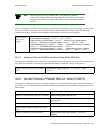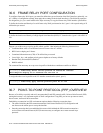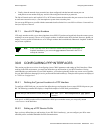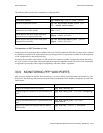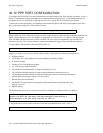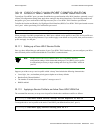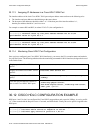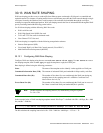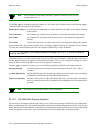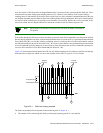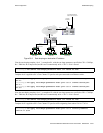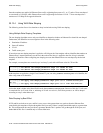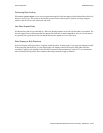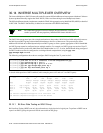
Riverstone Networks RS Switch Router User Guide Release 8.0 30-17
WAN Configuration WAN Rate Shaping
30.13 WAN RATE SHAPING
WAN rate shaping provides a way to send traffic from Ethernet ports out through a WAN port in a controlled and
equitable manner. For instance, incoming traffic from several Ethernet ports enter the WAN network through a single
serial port. Normally, the Ethernet flows would compete with each other for bandwidth through the serial port,
resulting in congestion and dropped packets. WAN rate shaping controls the flow of outbound traffic through the WAN
port by restricting bandwidth and using packet buffers.
Use WAN rate shaping with the following WAN line cards:
•
WAN serial line card
•
WAN High Speed Serial (HSSI) line card
•
T1/E1 and T3/E3 line cards in unframed mode
•
Clear Channel T3/E3 line card
WAN rate shaping is compatible with the following encapsulation schemes:
•
Point-to-Point protocol (PPP)
•
Cisco-based High Level Data Link Control protocol (Cisco-HDLC)
•
Multi-link Point-to-Point protocol (MLPPP)
30.13.1 Configuring WAN Rate Shaping
Configure WAN rate shaping using the two commands
wan define
and
wan apply
. Use
wan define
to create a
rate shaping template, then use
wan apply
to apply the template to a physical WAN port.
Rate shaping is defined using the following parameters:
Name The name of the template used to identify it when applied to a WAN port.
Committed Information Rate (CIR) The amount of outbound WAN port bandwidth in Kbps used by each flow
Committed Burst Size (Bc) The number of bits that a flow can send through the WAN port during any
sampling interval; the sampling interval is called the Committed Rate
Measurement Interval (Tc)
Excess Burst Size (Be) The number of bits that a flow can send through the WAN port in excess of
Bc if there is unutilized WAN port bandwidth (Be is optional)
Note
The RS calculates the sampling interval (Tc) automatically, using the equation
Tc = Bc / CIR.
In the example below, a WAN rate shaping template named “WanTemp1” is defined with CIR = 64 Kbps, Bc = 4000
bits, and Be = 2000 bits:
The RS calculates the sampling interval to be Bc / CIR = 2000 bits / 64000 bps = 1/32 sec. = Tc.
rs(config)# wan define rate-shape-parameters WanTemp1 cir 64000 bc 4000 be 2000



